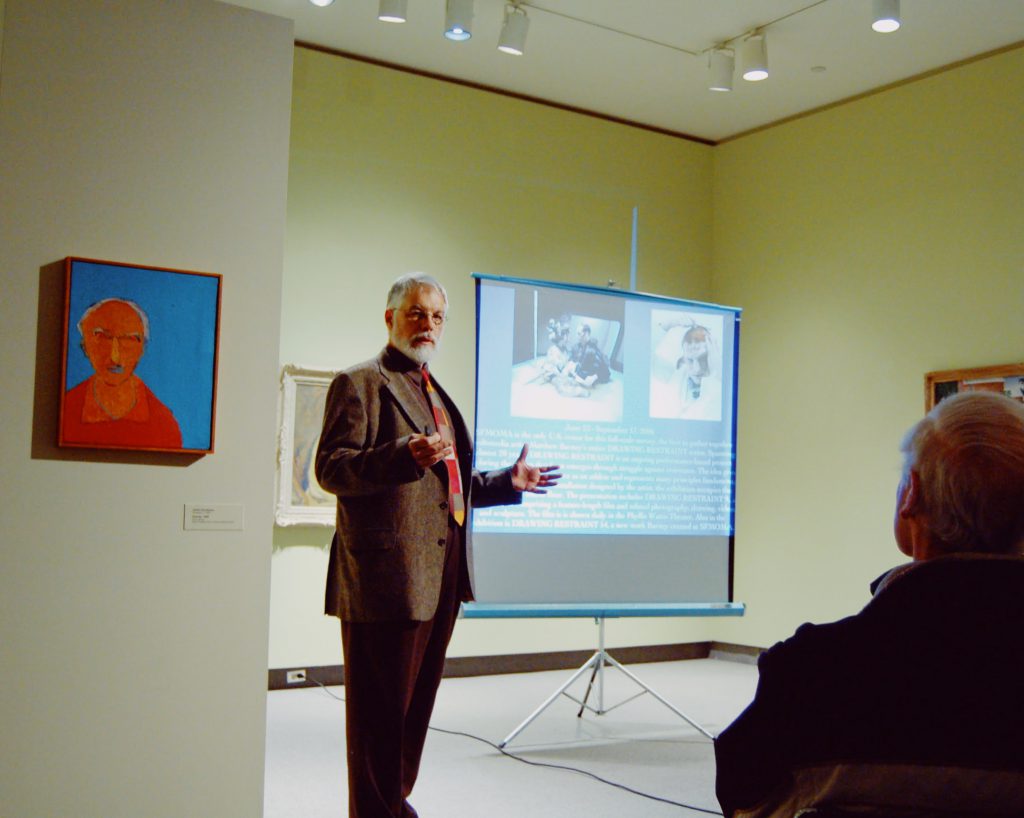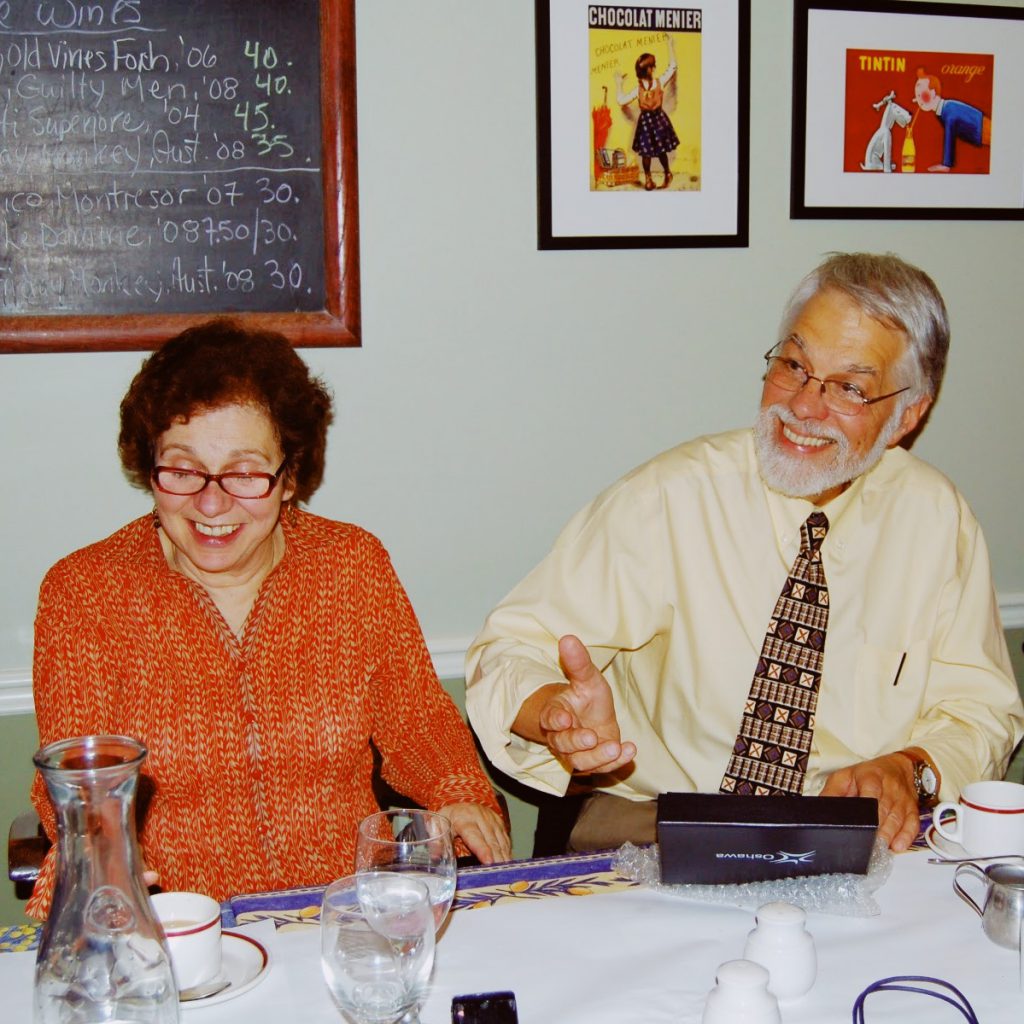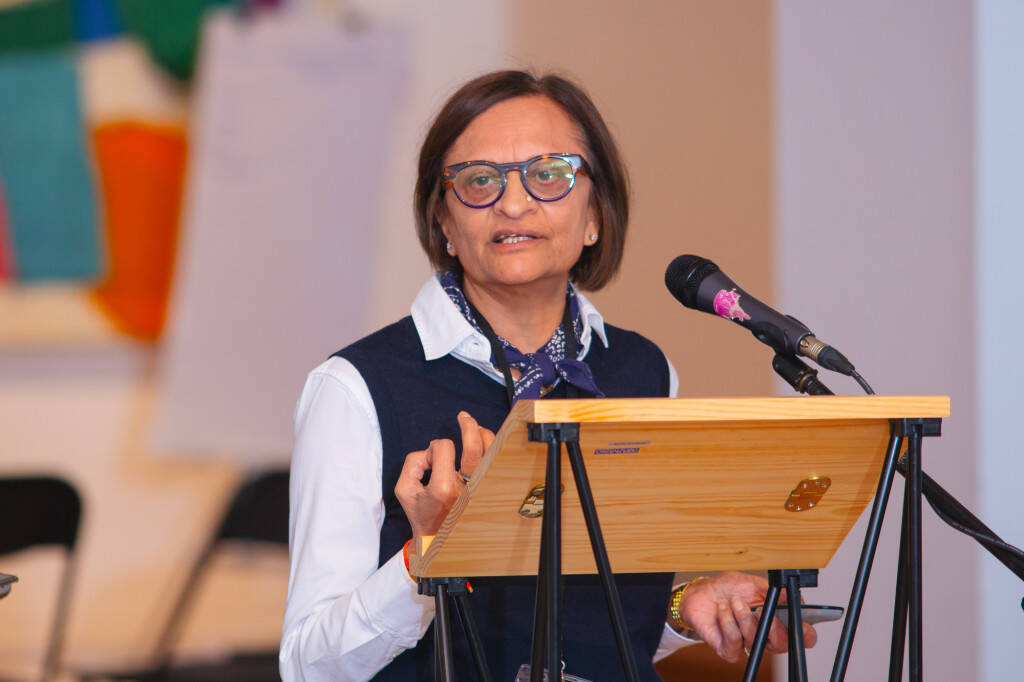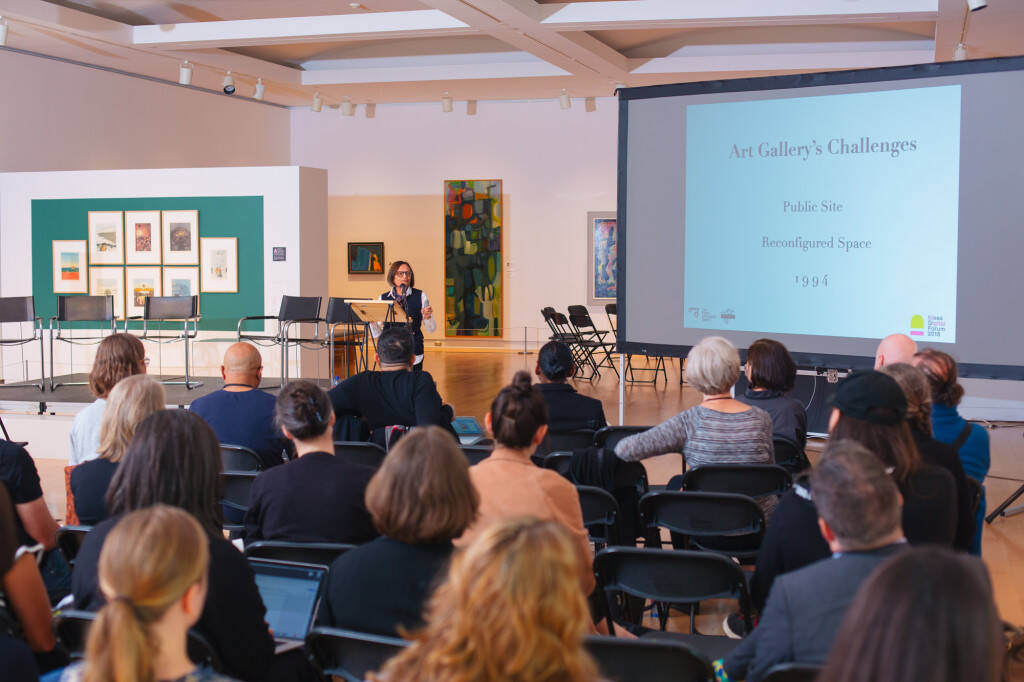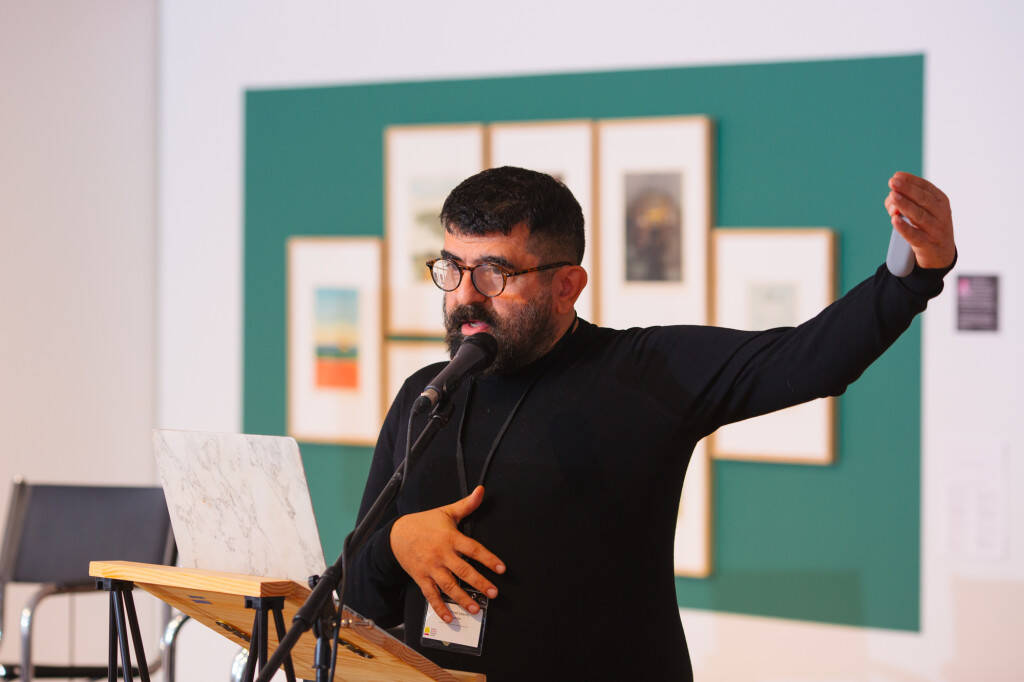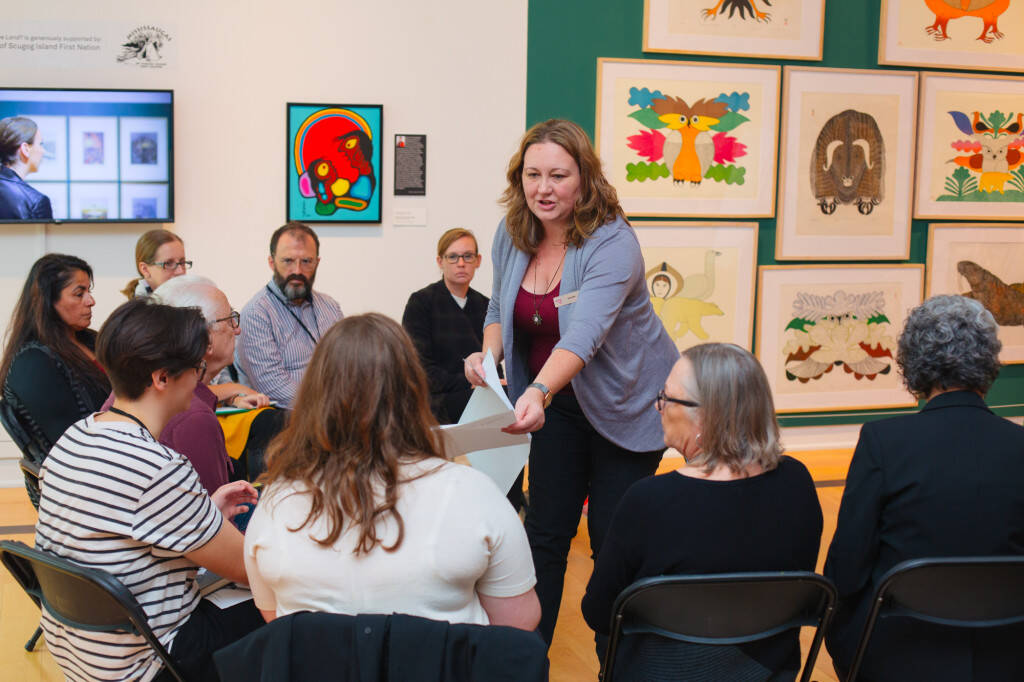Image: John Lander in his studio, 1986
By Joan Murray
Many years ago, when I was first made director of the Robert McLaughlin Gallery in Oshawa, John Lander, while still a student at York University in Toronto, showed me his work. I immediately recognized its unique quality. That remained the factor that distinguished his work throughout the years of his life. When he died in 1992, his art was still arresting compared with the art being made around him. Among the many ways in which he differed from his fellow artists in Canada was that where they might paint landscape or somehow echo it in their work, his art concerned mostly one subject, still life.
In other words, his images were of Nature, but remotely. He was a poet of the particular, the recognizable, in a subject he loved, flowers in the domestic realm.
This sense of the beauty of such a fragile subject, so varied and so tender, led Lander into a calculated risk, that of being typed as a flower painter, and therefore somehow secondary. That would have been a false impression for he had searching visual powers that delighted in the unusual shapes of both blossoms and vases. It was true that he loved them, and sought their forms with a deeply sympathetic insight, but he conveyed them with wit and a natural flair for elegance. They inspired his sense of design and very special use of colour.
The power to absorb and to set down images came to him only gradually, through a long process of decision-making and work. Lander initially went about it the following way: first, he bought flowers, then arranged them in a vase, then drew them many times, editing his drawings as he proceeded until he had a master drawing to compose a silkscreen print. In time, instead of drawing, he used slides of the flowers and of suitable vases or containers and edited them into a template for his work. Sometimes, the flowers and vases only met in his prints.
He began with the familiar flowers of daily life – gladioli, day lilies, poppies – and later moved to more exotic anthuriums, agapanthus, and birds of paradise.
The work which most deeply pleased him at this time in his work was his Coloured Dogfish print. It was a bouquet of anthuriums in a long narrow vase with a fish on it. Gentle, it was at the same time, humorous and stylish.
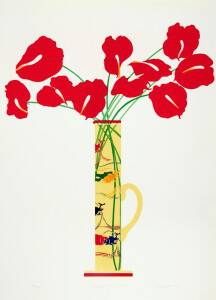
Coloured Dogfish (1978) Silkscreen
Something about the long process involved in making his silkscreen prints reminded Lander of the vanished joys of childhood, of times he and his family shared at their cottage at Lake of Bays, where he could paint paint-by-number pictures and work at his coloring books endlessly.
Born in Oshawa, he knew it well. He had played in Oshawa Creek as a child.
For public school, he had gone to Dr. S.J. Phillips and for high school, O`Neill Collegiate. Then, like many from Oshawa, he went to York University in Toronto. There, from 1970 to 1974, he took art and learned in the studio how to paint and, most important of all, how to make silkscreen prints with David Samila.
As Lander admitted of himself later, he could do art better than he could do anything else. He couldn`t throw a ball to perfection, and had no interest in this sort of competition, but he could do art.
His favorite books as a child had been C.S. Lewis`s Narnia series. Their sense of fantasy meant a lot to him and he always remembered them with pleasure.
He took a long period of time to find his path, working first in a studio in Oshawa, above the Jury & Lovell Drugstore at the Four Corners, then in Toronto, at Open Studio, but by the late 1970s, with the help of his dealer, Nancy Poole`s Gallery, his prints and posters were everywhere.
In 1981, when he moved to New York, his work changed in its medium, but not in its nature. His expanded the subject he loved, flowers, and tied them together with other evocative objects with which he felt they had some sort of relation. Exhausted by the flower-in-vase theme he`d used, he investigated still life.
Now he placed his flowers in window boxes or in their surroundings in a room – on top of a buffet, against a scarf or a kimono, on top of a lace tablecloth. He began to add furniture – a clock on a table, a settee, twin beds. He might introduce a quality of playfulness by adding tiny figurines.
The subjects were almost novelistic; the objects interacted like actors in a play.
He rendered the images in painstaking detail and with delicate precision. He had become more comfortable with realism and the tradition of painting.
The apparently effortless manner in which these works were painted should deceive no one as to the intense care that went into his craftsmanship and his great skill in painting.
By now, he had achieved what some artists hope for all their lives. His work was carried by a major New York gallery, the Fischback Gallery, then on 57th street. Known for showing the first Solo shows of what later became world figures, it had switched its emphasis from avant-garde art to realism in 1980. Fischback bought one of Lander`s paintings for its own collection and placed Lander`s work in group shows, then in 1989, gave him a one-person show.
Some would write of the great development in his work.
My own feeling is that much of his work appears as witty and compelling as it did when it was made and that Oshawa once had a grander future in view, because John Lander was born there.
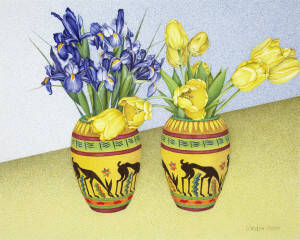
Tulips and Iris in Antelope Vase (1989)
Watercolour and graphite on paper
Gift of Ella and Ward Irwin
(An Exhibition of John Lander, Luminous John Lander: Landscape, Portrait, Still Life, will be on view at the Robert McLaughlin Gallery in Oshawa, September 29 – December 9, 2018)
(Joan was Director of the Gallery 1974-1999. When Lander died, she made a lithograph in his memory, Dead Duck (from the Say Goodbye series), and gave it to the Gallery)




 Cheryl Blackman, Kevin Dougherty, Derek Giberson, Lauren Gould, Roanna Green, Sonya Hill, Sonya Jones, Susan Magotiaux, Taba Merrikh, Donna Moriarty, Aleksi Moriarty, Annie Pinet, Mary Simpson, Carrie Williamson, and Kegan Winters.
Cheryl Blackman, Kevin Dougherty, Derek Giberson, Lauren Gould, Roanna Green, Sonya Hill, Sonya Jones, Susan Magotiaux, Taba Merrikh, Donna Moriarty, Aleksi Moriarty, Annie Pinet, Mary Simpson, Carrie Williamson, and Kegan Winters.